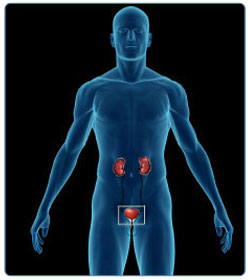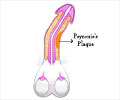Diagnosis of Erectile Dysfunction
Detailed sexual history, physical examination, blood tests and other diagnostic tests help to diagnose the cause of erectile dysfunction.
1. Patient medical/sexual history may reveal conditions or diseases that lead to impotence and helps distinguish among problems with erection, ejaculation, orgasm, or sexual desire.
2. Physical examination gives clues to the diagnosis of the cause of erectile dysfunction, for example-
- A problem in the nervous system may be responsible if the penis does not respond as expected to touch.
- Secondary sex characteristics, such as hair pattern, can point to hormonal problems.
- An aneurysm may indicate the presence of a circulatory problem.
- Unusual characteristics of the penis itself could suggest the cause of the impotence.
3. Laboratory tests that help to diagnose the cause of erectile dysfunction include blood counts, urinalysis, lipid profile, hormonal assays (thyroid, prolactin) and measurement of creatinine and liver enzymes. When low sexual desire is a symptom, measurement of testosterone in the blood can yield information about problems with the endocrine system.
4. Psychosocial examination helps reveal psychological causes of erectile dysfunction. The sexual partner also may be interviewed to determine expectations and perceptions encountered during sexual intercourse.
5. Diagnostic tests-
- Bulbocavernosus reflex test- This test is used to determine if there is sufficient nerve sensation in the penis.
- Duplex ultrasound- Vascular dilation and penile blood pressure can be measured using duplex ultrasound.
- Nocturnal penile tumescence (NPT) – Normally, men have five to six erections during sleep, especially during rapid eye movement (REM). Their absence indicates a problem with nerve function or blood supply in the penis.
- Penile Biothesiometry- Electromagnetic vibrations are used to evaluate sensitivity and nerve function in the glans and shaft of the penis.
- Dynamic Infusion Cavernosometry (DICC) - The vascular pressure in the corpus cavernosum during an erection can be measured with this test.
- Corpus Cavernosometry- Measurement of the vascular pressure in the corpus cavernosum can be measured using this test.
- Magnetic Resonance Angiography (MRA) - This is similar to magnetic resonance imaging and provides detailed images of the blood vessels.






















